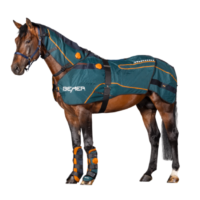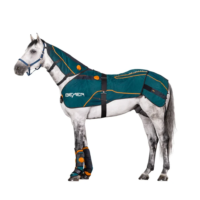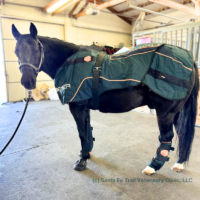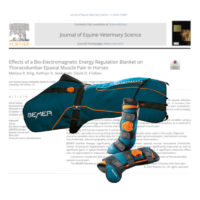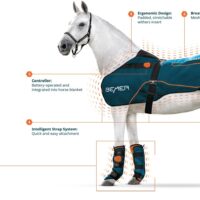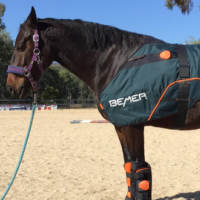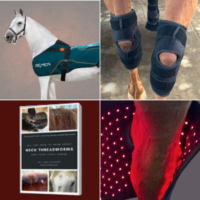Here’s a round-up of the science behind BEMER. First up, a 25-minute presentation on video, followed by the published science and a number of observational veterinary studies.
– Dr Jane Clothier
American Association of Equine Practitioners (AAEP) conference, 2022
Dr Joshua Berka, NMD, Chief Medical & Scientific Consultant at BEMER America, presented ‘Physical Vascular Therapy Research in Equine Medicine’ to equine vets at the AAEP conference. “Don’t confuse with PEMF… BEMER is the only PEMF on this planet that targets the microvessels – period,” he said.
BEMER and equine back pain
This cohort study aimed to assess the pain relieving and biomechanical benefits achieed through use of a BEMER (bio-electromagnetic energy regulation) therapy blanket on horses with thoracolumbar expaxial back pain. Eight horses were treated for 3 consecutive days with outcome variables measured daily for 5 days.
The BEMER blanket significantly improved nociceptive (pain response) thresholds, while postural stability and spinal flexibility were also significantly improved. Similar improvements were not present in measurements of muscle tone, ground reaction forces or serum biomarkers. With limitations including size and lack of controls, this study produced significant clinical and biomechanical effects in horses with back pain through the use of BEMER. Note: this study used the original BEMER equine model, now replaced by the Horse Set.
Dr. Melissa King is a Diplomate of the American College of Veterinary Sports Medicine and Rehabilitation and is an associate professor in equine sports medicine and rehabilitation.
King, MR, Seabaugh, KA, Frisbie, DD. “Effects of a Bio-Electromagnetic Energy Regulation Blanket on Thoracolumbar Epaxial Muscle Pain in Horses.” Journal of Equine Veterinary Science, 111: 103867 (2022).
Influencing the behavior of breeding stallions
In this unpublished German study, observations of the effect of the BEMER blanket with 29 stallions aged 3-20 years at the Schockemohle Breeding Station in North Germany over an 11-month period were documented by Dr. Hermann Josef Genn, FEI Veterinarian, and Bart Kools, the station’s Inseminator. In addition to age, specific temperament and sexual behavior details, weight, nutritional status and current training were taken into account. The specific sexual behavior of the stallions before, during and after semen collection as well as the sperm quantity and quality were documented.
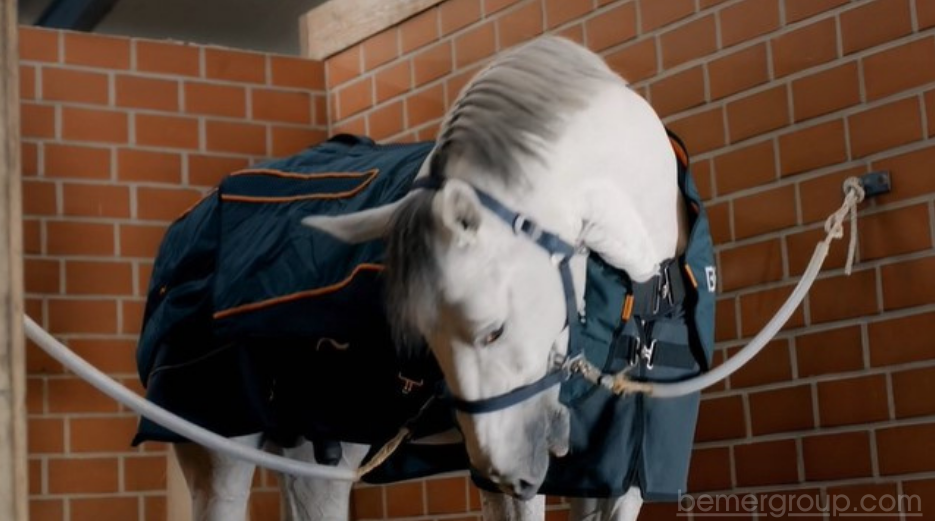
It was found that the stallions with relatively steady behavior and good libido delivered consistently good semen quality in terms of quantity and motility over the course of the BEMER therapy administered at higher level settings. The majority of stallions with weak or insufficient libido became more motivated and focused, responding well to the use of a lower level setting.
Previously, stallions were warmed up by riding or treadmill work prior to servicing, for improved protection of tendons, ligaments and complete muscular system. It was found that applying the blanket immediately upon cessation of exercise allowed continuous handling with the same personnel, which further reduced stress. Reduced stress led to a safer experience for horses, with fewer injuries, and a safer environment for their human handlers.
Using BEMER in equine surgery
In this standardized double-blind randomized study, 100 horses were assessed over a period of 1 year. During general anesthesia for vitrectomy surgery (equine recurrent uveitis), half the horses were administered a BEMER-blanket application for 15 minutes, with the other half being administered a placebo blanket. Arterial pressure, blood gas, blood lactate, and creatine kinase (CK) values were measured and compared between the groups, while recovery quality was scored.

It was found that the BEMER horses were more deeply sedated and recovery was significantly slower. Arterial blood pressure and blood lactate were lower in the BEMER group, but were not significantly so. CK values (elevated levels may indicate skeletal muscle, heart or brain damage or degeneration) were similar in both groups. It was concluded that improved microcirculation leads to more effective general anaesthesia.
Proceedings of the European College of Veterinary Surgeons online 30th Annual Scientific Meeting, 8-10 July 2021. Reproduced in the journal, Veterinary Surgery.
Brandenberger, O, Kalinowskiy, A, Körner J, Genn, HJ, Leser, S (2021). Effect of Bio-Electro-Magnetic-Energy-Regulation (BEMER)-Horse Therapy on Cardiopulmonary Function and Recovery Quality after Isofluran Anesthesia in 100 Horses Subjected to Pars-Plana Vitrectomy. Veterinary Surgery, July 08-10, 7. doi: 10.1111/vsu.13672 //
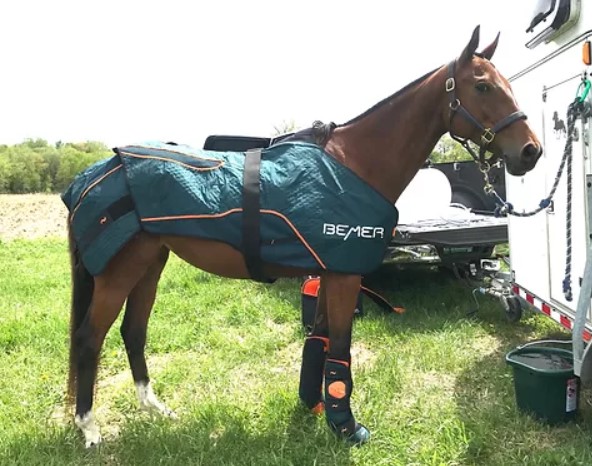
BEMER and post-exercise recovery
This published prospective, randomized, double blinded, placebo-controlled crossover study aimed to assess the effect of BEMER® in influencing post-exercise recovery rate through hematological and biochemical blood parameters within 1 hour, and stress reduction by physiological and behavioral indicators. 12 horses were subjected to 15 minutes on the lunge. Blood samples, thermographic infrared images, Heart Rate Variability and behavior were analyzed.
After two weeks of treatment, post-exercise hematocrit (%) was lower in horses using BEMER than those with either a placebo blanket or no blanket. They also had a lower LF/HF ratio (indicates parasympathetic nervous system dominance). The results were not significant, but do suggest an effect of BEMER therapy on vagal activity and relaxation.
